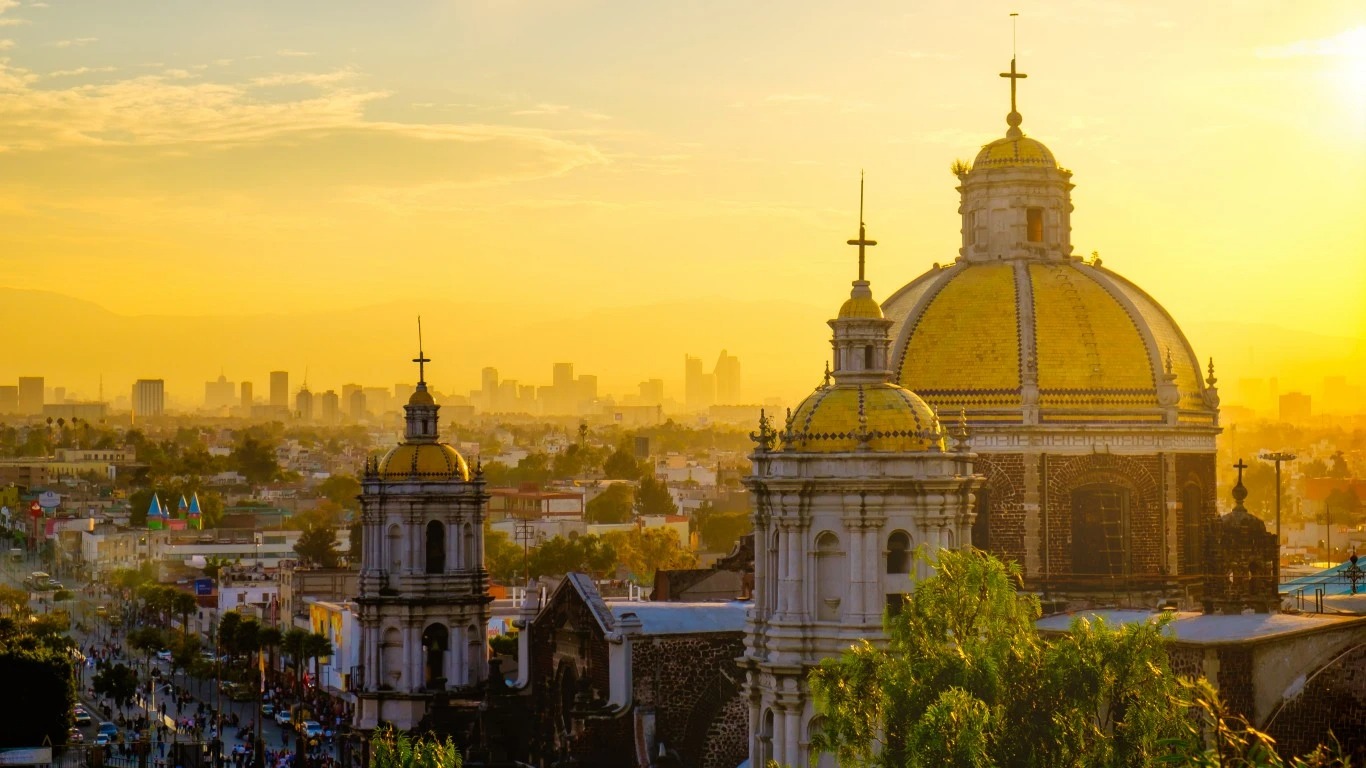
Contaminated water, poor waste management, unregulated industrial pollution, uncontrolled urban sprawl, severe traffic congestion, degraded natural habitats, floods, droughts, and toxic air. These are all common ecological threats among the world’s largest and fastest growing urban areas. But some cities are better equipped to deal with these threats than others.
There are currently 33 megacities — cities with more than 10 million people — in the world, and 14 more cities are projected to become megacities by 2050. Of the 47 projected megacities, high-income cities with low population growth will be better able to deal with ecological threats over the next 50 years. (Also see the 27 countries that face the worst catastrophic ecological threats.)
However, 20 cities with high population growth, low societal resilience, and substantial ecological threats are of most concern – likely to face future sustainability and security issues, according to the global think tank Institute for Economics & Peace report Ecological Threat Report 2022.
24/7 Wall St. reviewed the 20 cities the report identified as high risk – some already megacities and some will become megacities by 2050 (marked by asterisk). The report considered several criteria, including population growth, current coping abilities, number and intensity of ecological threats, ranking on the global peace index (GPI), and various measures of violence. We added estimated GDP for each city in 2020 in U.S. dollars from the international think tank City Mayors.
These 20 cities will be home to an estimated 444 million people by 2050, when the global population is expected by the United Nations to reach 9.8 billion. This means nearly one out of 20 people worldwide will reside in these cities. Meanwhile, continued rising sea levels and temperatures caused by human activities will further worsen many of the problems. (Earth’s CO2 level rose every year since climate change became a national issue.)
Of the 20 cities, mostly in the Global South, 14 urban areas (defined as the city plus the surrounding sprawl) are located in Africa or the Indian Subcontinent. Three of the 20 megacities identified are in Latin America, two in Southeast Asia, and one in the Middle East.
Not all the 20 cities on the list face equally challenging threats. Those facing the harshest challenges are: Kinshasa, Nairobi, Lagos, Dhaka, Baghdad, Lahore, Kolkata, and Delhi. “These cities have high projected population growth rates, poor sanitation, lack of infrastructure, high crime rates and substantial ecological threats,” the report notes.
Poor and potentially fatal ambient indoor and outdoor air quality persists in all but one of the listed 20 megacities. These air quality risks range from moderate to hazardous, which can cause respiratory and other diseases that are significant contributors to morbidity and mortality, according to the World Health Organization.
Ecological and social challenges in many of the world’s megacities are exacerbated by civil unrest, according to the report, the World Bank, and other sources. The instability makes it more difficult for societies and outside organizations to address these ecological challenges. Simply put, the more peaceful a country is, the easier it is to face these problems.
Here are the megacities facing the biggest ecological threats.





